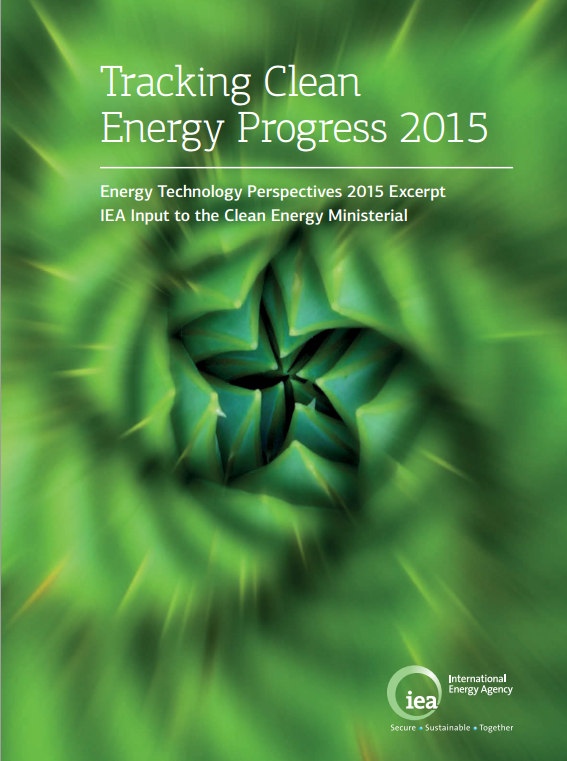The Fight For Clean Energy: Progress Under Pressure

Table of Contents
The Growing Momentum of Renewable Energy Sources
The global shift towards renewable energy is undeniable. Solar power, wind power, hydropower, geothermal energy, and biomass energy are experiencing unprecedented growth, fueled by technological advancements, decreasing costs, and supportive government policies. This burgeoning sector is rapidly transforming the global energy landscape and offering a pathway to a lower-carbon future.
-
Increased solar and wind farm installations worldwide: The International Renewable Energy Agency (IRENA) reports a significant increase in renewable energy capacity globally, with solar and wind power leading the charge. Massive solar farms are being built across deserts and sun-drenched regions, while offshore wind farms are harnessing the power of the oceans. This rapid expansion is drastically reducing the cost of renewable energy generation.
-
Advancements in energy storage technologies: One key challenge for renewable energy sources like solar and wind is their intermittency. However, advancements in battery technology, including lithium-ion and flow batteries, as well as pumped hydro storage, are improving the reliability and efficiency of renewable energy systems. These technologies are crucial for ensuring a consistent energy supply.
-
The rising role of hydropower and geothermal: Hydropower continues to be a significant source of renewable energy, particularly in regions with abundant water resources. Geothermal energy, harnessing the Earth's internal heat, provides a stable and reliable baseload power source, especially in volcanically active regions.
-
Government incentives and subsidies: Many governments worldwide are implementing policies such as feed-in tariffs, tax credits, and renewable portfolio standards to incentivize the adoption of renewable energy technologies. These subsidies are significantly driving down the cost of renewable energy and making it more competitive with fossil fuels.
The cost reduction in renewable energy technologies has been remarkable. The price of solar photovoltaic (PV) panels has fallen dramatically over the past decade, making solar power increasingly affordable and accessible. Similarly, the cost of wind turbines has decreased, leading to a significant increase in wind energy installations. This makes renewable energy sources increasingly competitive against traditional fossil fuels.
Challenges and Obstacles to a Clean Energy Future
Despite the progress, significant hurdles remain in the transition to a clean energy future. Overcoming these obstacles requires concerted global effort, technological breakthroughs, and robust policy frameworks.
-
Continued reliance on fossil fuels: The world remains heavily reliant on fossil fuels – coal, oil, and natural gas – for energy generation and transportation. Phasing out these fuels and transitioning to clean alternatives requires a substantial investment in new infrastructure and a shift in consumption patterns.
-
The need for substantial investment in new energy infrastructure: The large-scale adoption of renewable energy necessitates significant investments in new infrastructure, including transmission lines, smart grids, and energy storage facilities. This infrastructure is essential for efficiently transporting and storing energy generated from dispersed renewable sources.
-
Political resistance and lobbying by fossil fuel interests: Powerful vested interests in the fossil fuel industry often lobby against policies that promote clean energy, creating significant political obstacles to the energy transition.
-
Intermittency challenges of renewable energy sources: The intermittent nature of solar and wind power presents challenges for grid stability. Addressing this requires efficient energy storage solutions and advanced grid management technologies.
-
The high initial cost of renewable energy projects: While the operational costs of renewable energy are generally lower than those of fossil fuels, the initial investment required for renewable energy projects can be substantial, potentially posing a barrier for some developing countries.
-
Lack of public awareness and education: A lack of public awareness and understanding of the benefits of clean energy and the urgency of climate change can hinder the transition. Increased public education and engagement are crucial for driving broader support.
The geopolitical implications of energy transitions are also significant. Competition for resources, shifts in global power dynamics, and the potential for conflicts over access to clean energy technologies are all factors that need careful consideration.
Addressing Grid Instability with Smart Grid Technologies
The intermittency of renewable energy sources poses a challenge to grid stability. However, smart grid technologies are playing a crucial role in overcoming this obstacle.
-
Improved grid management through real-time monitoring and control: Smart grids use advanced sensors, communication networks, and data analytics to monitor and control electricity flow in real-time, optimizing energy distribution and improving grid reliability.
-
Integration of energy storage solutions: Smart grids facilitate the integration of energy storage systems, such as batteries and pumped hydro, which can store excess energy generated during peak production periods and release it when demand is high.
-
Development of microgrids for enhanced resilience: Microgrids are localized grids that can operate independently from the main grid, enhancing the resilience of energy systems to disruptions and improving their ability to integrate renewable energy sources.
-
Implementation of demand-side management programs: Smart grid technologies enable demand-side management programs, encouraging consumers to shift their energy consumption to off-peak hours, reducing strain on the grid and maximizing the use of renewable energy.
-
The use of AI and machine learning for optimizing energy distribution: Artificial intelligence and machine learning algorithms are being used to optimize energy distribution, predict energy demand, and improve the integration of renewable energy sources into the grid.
Policy and Innovation Driving the Clean Energy Transition
Government policies and technological innovation are crucial drivers of the clean energy transition. Supportive policy frameworks create incentives for investment in clean energy technologies, while technological advancements are continuously improving the efficiency and affordability of these technologies.
-
Examples of successful national climate policies: Many countries have implemented successful climate policies, such as carbon taxes, cap-and-trade systems, and renewable portfolio standards, that incentivize the reduction of greenhouse gas emissions and the adoption of clean energy.
-
The impact of international agreements: International agreements, such as the Paris Agreement, play a critical role in setting global targets for emissions reductions and fostering international cooperation on climate action.
-
Advancements in battery technology, solar cell efficiency, and wind turbine design: Continuous technological advancements are leading to significant improvements in the efficiency and cost-effectiveness of renewable energy technologies.
-
The importance of research and development funding: Sustained investment in research and development is essential for driving further innovation in clean energy technologies.
Private sector investment is also a critical factor, with a growing number of companies investing in renewable energy projects and developing new clean energy technologies. The emergence of new clean energy businesses is creating jobs and driving economic growth.
Conclusion
The fight for clean energy is a complex and ongoing battle, but significant progress is being made. While challenges such as fossil fuel dependence, grid instability, and political resistance remain, the growing momentum of renewable energy sources, coupled with supportive policies and technological innovation, provides reason for optimism. The transition to a sustainable energy future requires sustained effort, collaboration, and a global commitment to tackling climate change. The decreasing costs and increasing efficiency of solar power, wind energy, and other sustainable energy solutions are making the transition both economically viable and environmentally necessary.
Join the fight for clean energy! Learn more about renewable energy sources, support sustainable energy initiatives in your community, and advocate for policies that promote a clean energy future. Let's accelerate the transition to a sustainable world powered by clean energy.

Featured Posts
-
 I Megali Tessarakosti Esperida Stin Patriarxiki Akadimia Kritis
May 21, 2025
I Megali Tessarakosti Esperida Stin Patriarxiki Akadimia Kritis
May 21, 2025 -
 A New Era For The Trans Australia Run Record In Sight
May 21, 2025
A New Era For The Trans Australia Run Record In Sight
May 21, 2025 -
 Problemen Met Online Betalingen Naar Abn Amro Opslag
May 21, 2025
Problemen Met Online Betalingen Naar Abn Amro Opslag
May 21, 2025 -
 Funkos Dexter Pop Release Date And Where To Buy
May 21, 2025
Funkos Dexter Pop Release Date And Where To Buy
May 21, 2025 -
 New Trans Australia Run Record Attempt A Closer Look
May 21, 2025
New Trans Australia Run Record Attempt A Closer Look
May 21, 2025
